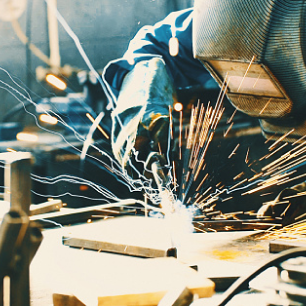Jump to:
Quality Assurance vs. Quality Control
Quality assurance (QA) and quality control (QC) are often considered the same; however, they are distinctly different, and the inspectors performing these functions usually have different duties and responsibilities........
Definitions
QA provides general guidelines used in the comprehensive quality system. The core of QA is to provide confidence that the quality requirements will be fulfilled. Verification is the main focus of QA and is typically accomplished through auditing. The extent of auditing may be defined for the project or may be at the QA inspector’s discretion. When the QA inspector’s audit finds systemic discrepancies, expanding the score of the audit would be appropriate. The focus of QA is to ensure the QC functions are correctly carried out.
QC is specifically related to products or services. QC is focused on fulfilling the contract-specified quality requirements and is primarily accomplished through inspections.
QA and QC in Welding
How are QA and QC explicitly related to the welding industry, and who is typically responsible for these roles? AWS D1.1:2020, Structural Welding Code — Steel, uses the terms contractor’s inspection and verification inspection in Clauses 8.1.2.1 and 8.1.2.2.
The contractor’s inspection is the inspection and testing that shall be performed before assembly, during assembly and welding, and after welding to ensure the materials and workmanship meet the requirements of the contract documents. Fabrication and erection inspection and testing shall be the responsibility of the contractor unless otherwise specified in the contract documents. As stated in Clause 8.1.2.1, these are the actual product inspections (i.e., dimensions and weld quality), and these are the contractor’s responsibility and generally are delegated to the contractor’s inspector. In addition, the contractor must perform welding procedure specifications (WPSs) and welder qualifications. These duties are often delegated to the contractor’s inspector as well.
Verification Inspection
The verification inspection is a type of inspection and testing performed in which the results are promptly reported to the owner and contractor to avoid delays in the work. Typical verification inspection (think of auditing for this function) elements are as follows:
- Review of the contractor’s WPSs for suitability for the work to be performed;
- Review of the contractor’s welder performance qualification records (WPQRs), or perhaps even witness the welder’s qualifications demonstrations;
- Review of the material test reports (MTRs);
- Corroboration that the inspection and test plans (ITPs) or travelers are updated and current; and
- Verification that the nondestructive examination (NDE) reports and personnel certifications, as well as other quality-related items required by the contract, are properly documented.
This auditing intends to ensure that the QC functions have been adequately performed and the contractor’s quality system is functioning correctly. The intent is basically to “QC” the QC; however, QA functions do not necessarily exclude the QA inspector from verifying some or all of the QC’s responsible inspections.
The extent of actual product inspection may be specified in the contract — in the QA inspector’s work contract — or may be determined as necessary whenever there is reason to question the credibility of the contractor’s inspections. This function is typically performed by the owner’s QA or contracted third-party inspector.
At the owner’s discretion, QA functions may be delegated to the contractor; however, this may be construed as the fox guarding the hen house. This option is better reserved for contractors with an excellent reputation for quality and with a robust quality system, such as the AWS Certified Welding Fabricator (CWF), ISO 9000, and others. Contractors with certified quality systems are audited by the certification body periodically to ensure there is evidence the contractor is performing the quality duties in accordance with their documented quality system. Typically, the owner’s organization would audit the contractor’s quality system and approve them as an approved supplier. This approval may justify delegating some or all the QA functions to the contractor.
Welded Products
Concerning welded products, QA and QC inspectors typically play different roles and have different responsibilities. For instance, a QC inspector (who works for the contractor) is generally considered highly knowledgeable in welding and is perhaps an AWS Certified Welding Inspector (CWI). In addition to the typical inspection duties, the contractor’s inspector (QC) may be tasked with directing the contractor’s welders on quality and welding matters. This same activity would be wholly inappropriate for an owner’s inspector (QA). The owner’s inspector’s responsibility is to promptly report observations (both acceptable and not acceptable) to the owner and the contractor’s management or supervision. This means a QA inspector may bring concerns to the welder’s supervision, thus allowing the contractor to initiate the appropriate corrections. In either case, the personality of the inspector (either QA or QC) plays a key role in the quality system.
Communication is Vital
The quality professional (QA or QC) must be an excellent communicator. They must be able to speak and understand engineering and welder slang, and they must strive to develop a professional relationship with all parties concerned. Having worked in both the QA and QC roles, I like them equally. They both have their unique challenges and rewards. Both roles are grounded in helping to ensure the customer receives the highest quality products and services within or exceeding the contract requirements.
DARYL PETERSON (daryl.peterson@outlook.com) is quality manager at Central Maintenance and Welding, Lithia, Fla. He’s an AWS SCWI, ASNT Level III, API 653, and SSPC PCI Level II inspector.


